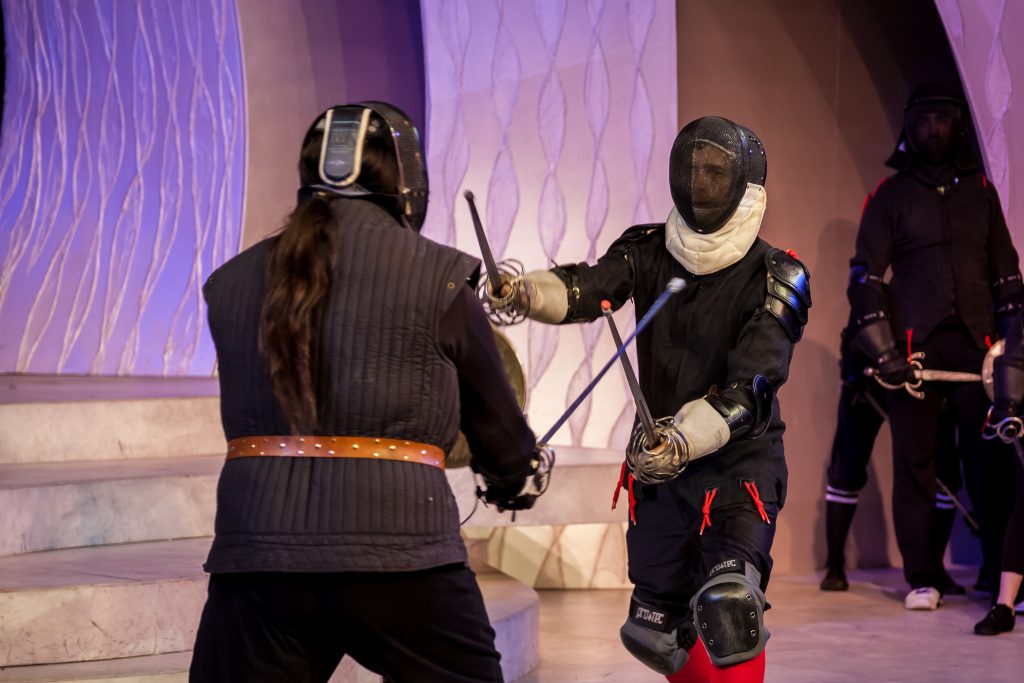Robert Borsos, my horseback archery instructor, raced down the lane and planted 12 arrows in the target. An impressive feat from horseback. As he rode past me back to the starting gate to do a second run, I noticed that he had passed his bow into the other hand and was going through a series of draws with his left. “I do one draw with my left for every draw I did with my right," he said as he rode by.
This echoed a practice I had begun moving toward at Academie Duello years earlier. A practice to lead all drills as both right and left-dominant exercises. Ideally every lunge, cut, or parry you perform on your dominant side, you would echo on your non-dominant side. This not only leads to a more physically pleasing physique, one where you don’t have a massive shoulder on one side and butt cheek on the other, but also to a healthier and higher-performing body.
Localized Weakness Can Lead to Injury
If one set of muscles is significantly stronger than another you can create an environment where one part of your body is able to overpower another part and thus take it beyond its limits. Overdevelopment in one area can also cause your skeleton to be brought out of alignment which can easily lead to pinched nerves, grinding away cartilage, and muscle strain. Fencers, golfers, tennis players, hockey players, and other side-dominant athletes who primarily focus on their right or left side frequently get sciatic nerve pinches, slipped disks, and pulled muscles that result from overemphasizing one part of their body in sporting. It is common for them to then injure themselves when they use the opposite side in their everyday lives.
You’re Only As Strong as Your Weakest Link
One part of your body can only get so far ahead of another before meeting asymmetrical limitation. World-class golfer Vijay Singh is known to repeat every stroke he makes right-dominant as a left-dominant practice swing. He and his coaches have noticed a measurable increase in the performance of his dominant side since he took up this practice.
Ambidexterity is Twice as Much Fun
The best argument I’ve heard for practicing symmetry is that being able to fence equally on either side means you can fence twice as long and thus have twice as much fun. Also, if you have any fantasy at all of using a second sword simultaneously in your sub-dominant hand, you’ll need to become an equally smart and fit single-sword fencer on each side before hoping to coordinate both sides at once.
Practice Evenly, Rebalance Unevenly
If you’re just starting out in swordplay, this is a great opportunity to start developing evenly while everything is similarly weak and stupid-feeling. I recommend practicing every exercise in class and at home with both sides of your body. Do this in small repetition groups (five is a good number) and start with your non-dominant side. In this way you’ll be more likely to practice on both sides and not forget to get in reps on the sub-dominant one.
If you're already uneven in your development you’re going to have to undo your imbalance by committing the same sin in reverse. Start practicing twice as much on your non-dominant side as you do on your dominant one and definitely start all exercises with the sub-dominant hand to make sure it's getting an edge in your training time.
Once you’re balanced, make sure to keep following in Robert Borsos' hoof prints. Figure out your own ongoing system for making sure that every movement on your dominant echoes immediately on your non-dominant. The payoff for your long-term physical and mental health and abilities will be well worth it.
